I believe the messages present in this story by J.D. Salinger are still largely relevant, and serves as one of the greatest sources of understanding for teenagers and troubled young adults. Therefore, I want to aid in a revival in the popularity of the book and make it highly relevant again, so that more people are exposed to the contents within. With this artist book they can visually connect with Holden and his experiences by seeing how his perspective on the landscape evolves depending on how he feels in different scenarios. It also retells some of the most inspiring quotes from the book, as told in the story itself.
The book being sewed by hand is sort of hinting a reference to Holden's younger brother's baseball glove, especially the stitches on the back and the cover. His brother, Allie, died when he was 11 and Holden was 13. This is an important detail to the story because it represents Holden's grief and he uses his glove to confront and deal with his pain and feelings. Holden feels guilty for being the one out of them two that is alive and stupid, instead of being smart like Allie, and this is a central feeling Holden is experiencing through his story in the book.

The cover sees sixteen-year-old Holden Caulfield smoking a cigarette, wearing his red hunting hat that is a symbol of his protection against the adult world. It is also the same colour as his dead brother's hair and is a symbol of his death and Holden's survivor's guilt.

The baseball glove and his hunting hat are his sacred objects that reminds him of the past and is helping him confront the present. The cover also starts with famous quotes from Holden and it continues all the way to the back of the book, so that the cover and the backside has a connection. The colours can mean a lot of different things. Warmth, anger, emotional strength, fear, anxiety, depression, frustration, security - all of these fit a description of Holden.


First page - An intro page for those who knows the story of the book well, some sort of reference only they would understand. It's there for fun, doesn't mean this book isn't for new readers as well.


Holden is leaving prep school for being kicked out and is trying to feel some sort of goodbye before leaving, watching the football game up from the top of Thomsen Hill, instead of actually being there, again isolating himself.
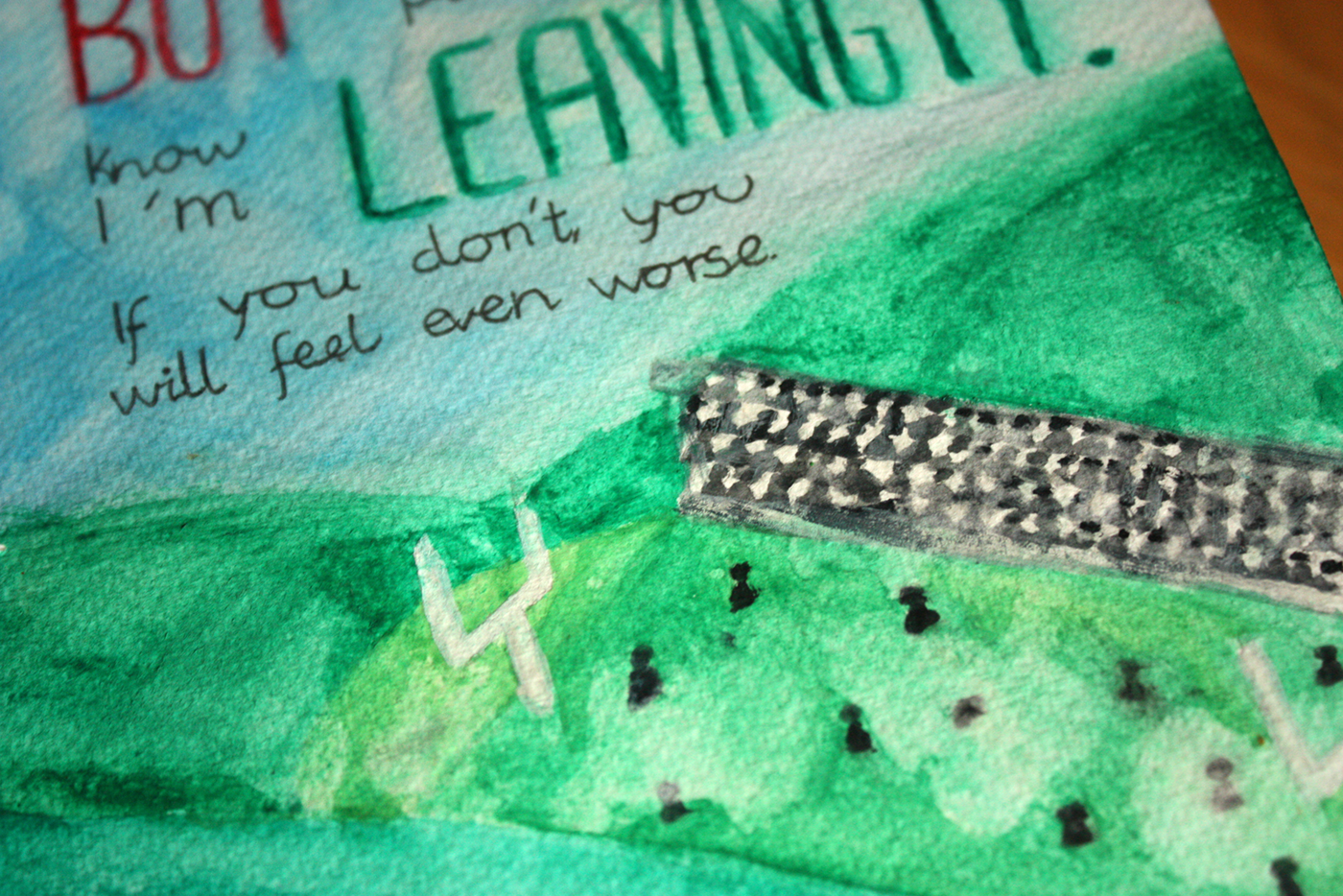
He watches the people from a distance instead of connecting with them. He feels like he has to know that he's leaving a place or else he would feel even worse than he already does. The blue tones on these pages represent sadness and isolation. The canon is there as it is mentioned from the original book.
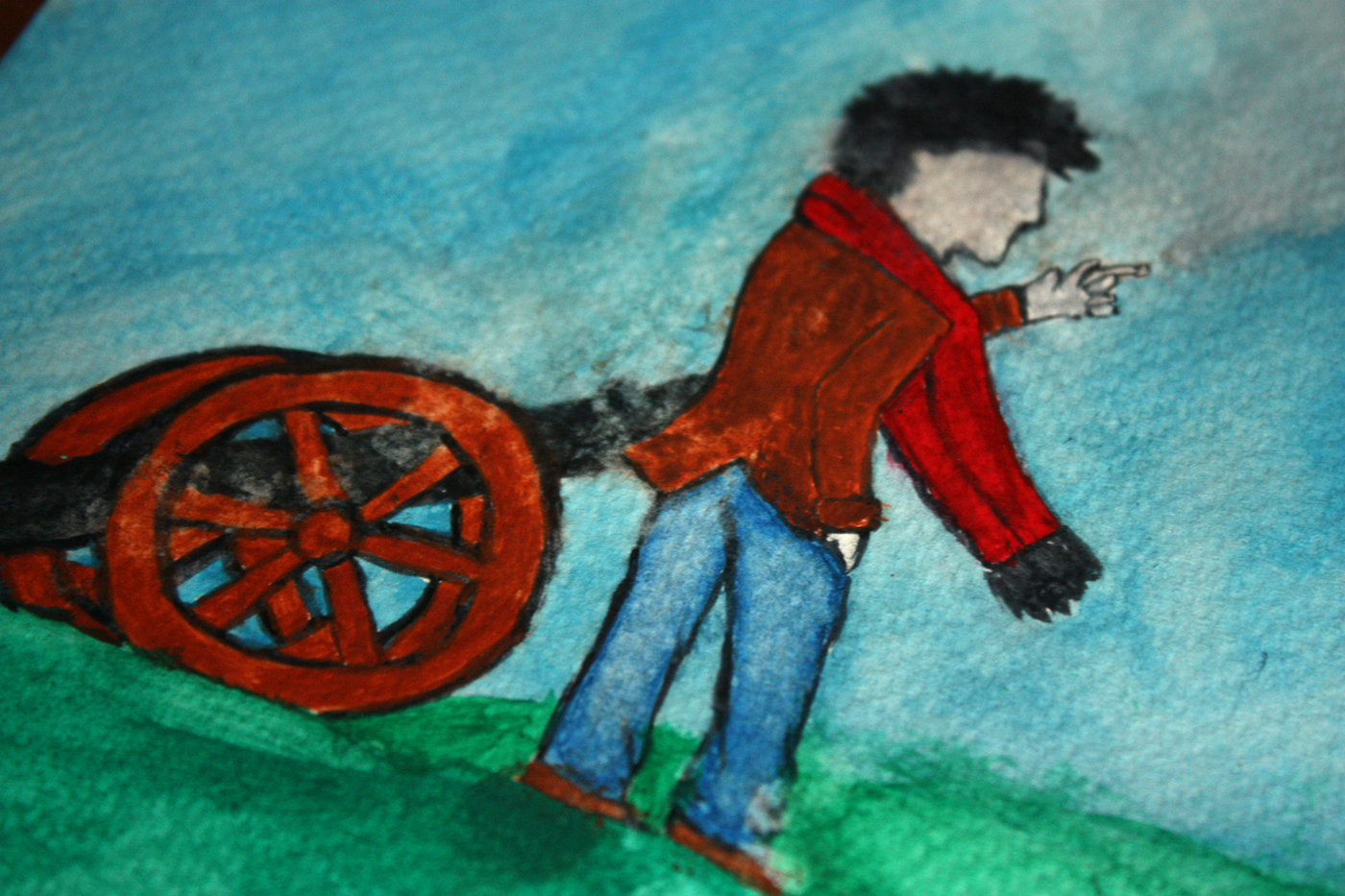
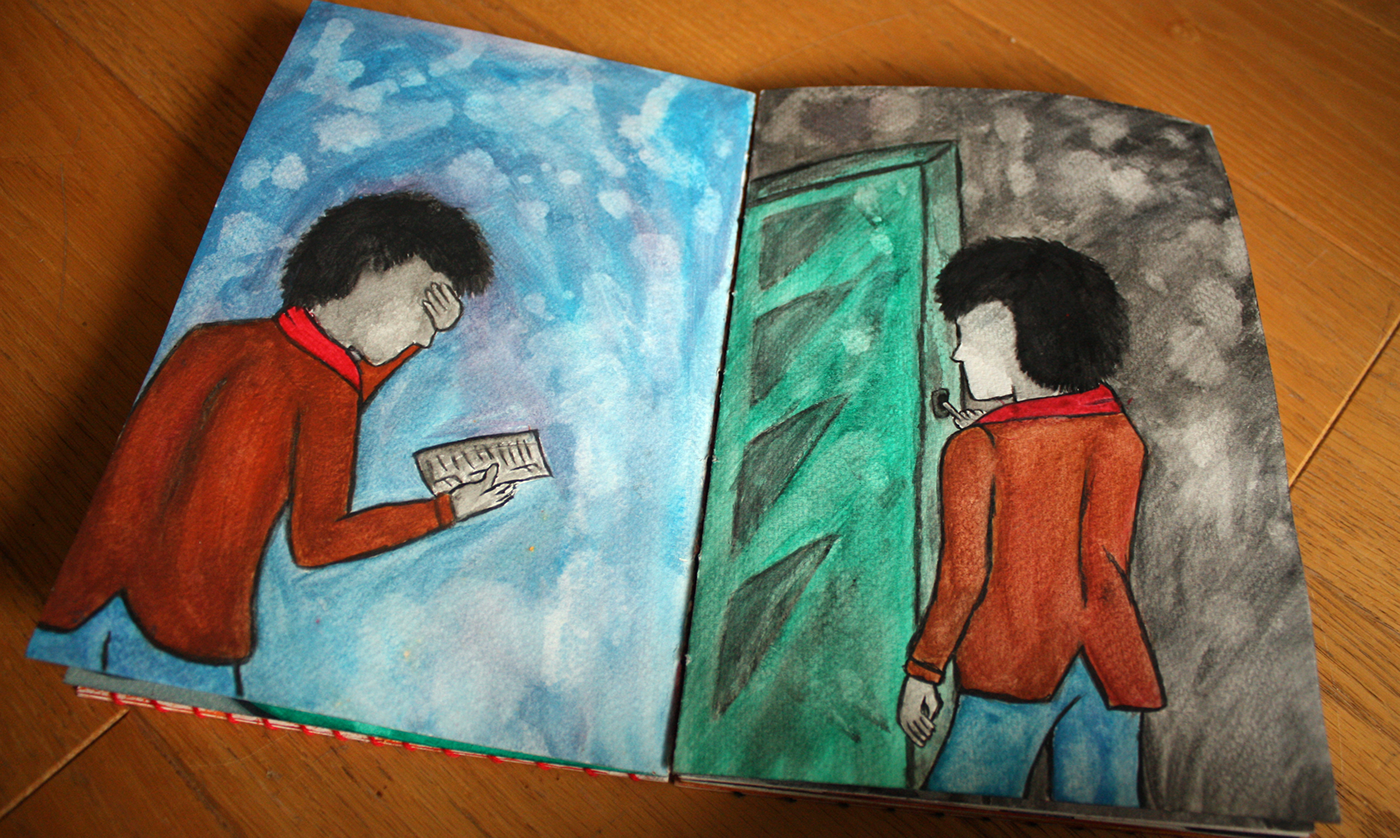
Colours are being used psychologically compared to what Holden is feeling. He is failing all of his classes, except for English, and he feels like a failure, like he does not belong. This is something that a lot of people can relate to at some point in their lives.

Holden runs home to his favourite teacher, Mr. Spencer, to say goodbye as he got a note from him to visit, even though he knows he's going to get a boring lecture out of it, hence the colour green on the door (boredom.) They grey in the background symbolises lack of energy, as Mr. Spencer is an old man and has the flu.


His teacher is giving him a lecture of how life is a game you have to play according to the rules. Holden's thoughts are in red, showing that he's disagreeing to what he says (anger/frustrated.)
Mr. Spencer is sitting in his chair in his bathrobe and Holden doesn't think it's very pleasant. Blue is central here for communication and for coldness for telling Holden that he should look out for his future, because soon it might be too late to realise that he should have been concerned.
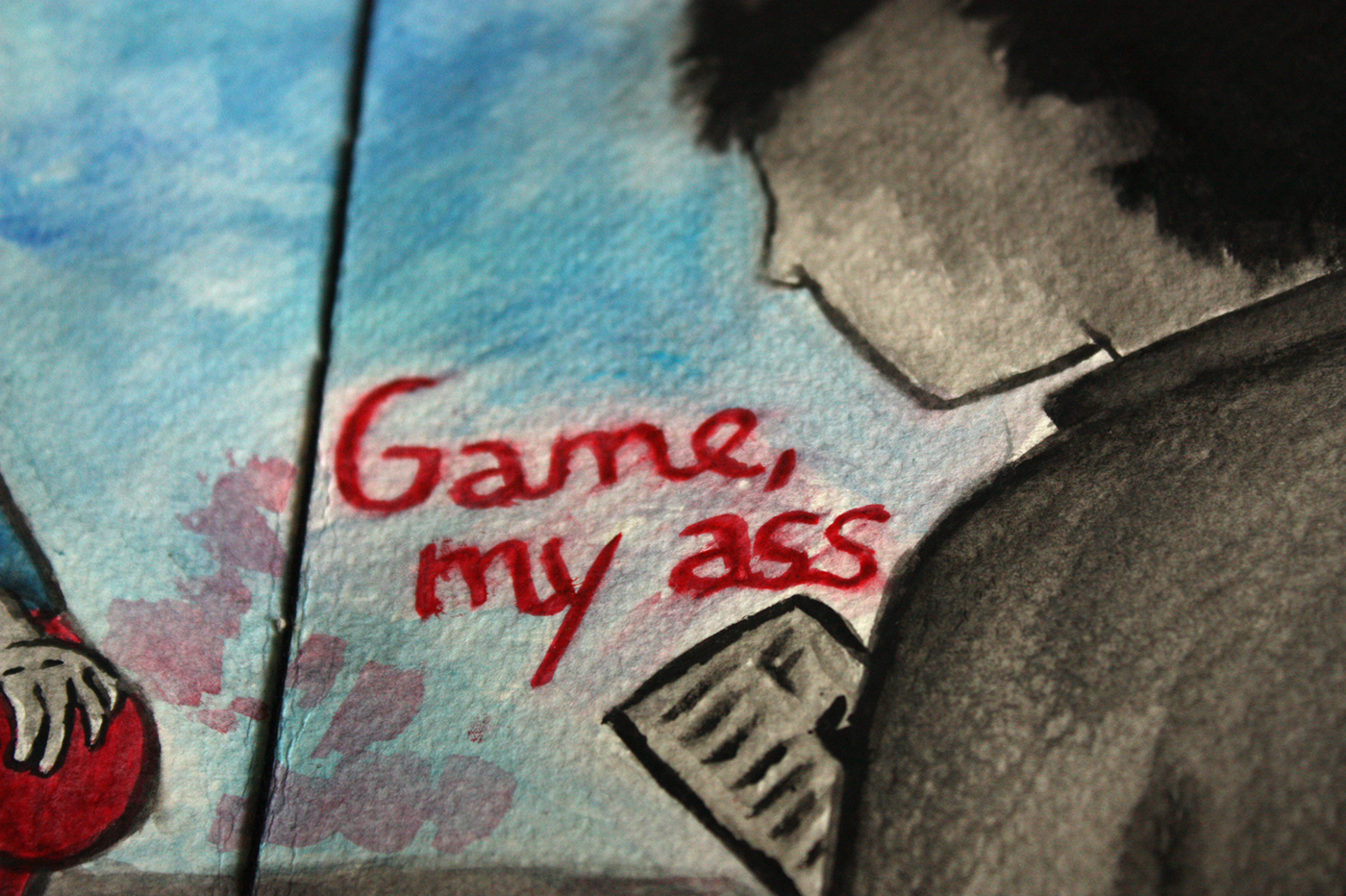

The red words are to show Holden's aggression. Mr. Spencer told Holden that he met his parents and called them "grand" people. He hates "phonies" and the word grand.

The words grand is formed like a staircase to hint that Holden is walking out of the house, as Mr. Spencer may have yelled "good luck" after him. Holden would have never yelled "good luck" at anyone. Things Mr. Spencer says is portrayed in speech bubbles to show that it's Holden saying "I guess", not really caring.


Holden likes to read and when the book is good he has mixed emotions, as he wishes he knew the author so that he could call him up whenever he felt like it. Which is both perhaps sadness and excitement.
He feels at peace with reading books and he wears his hunting hat while doing it. Holden says he is "quite illiterate, but I read a lot."

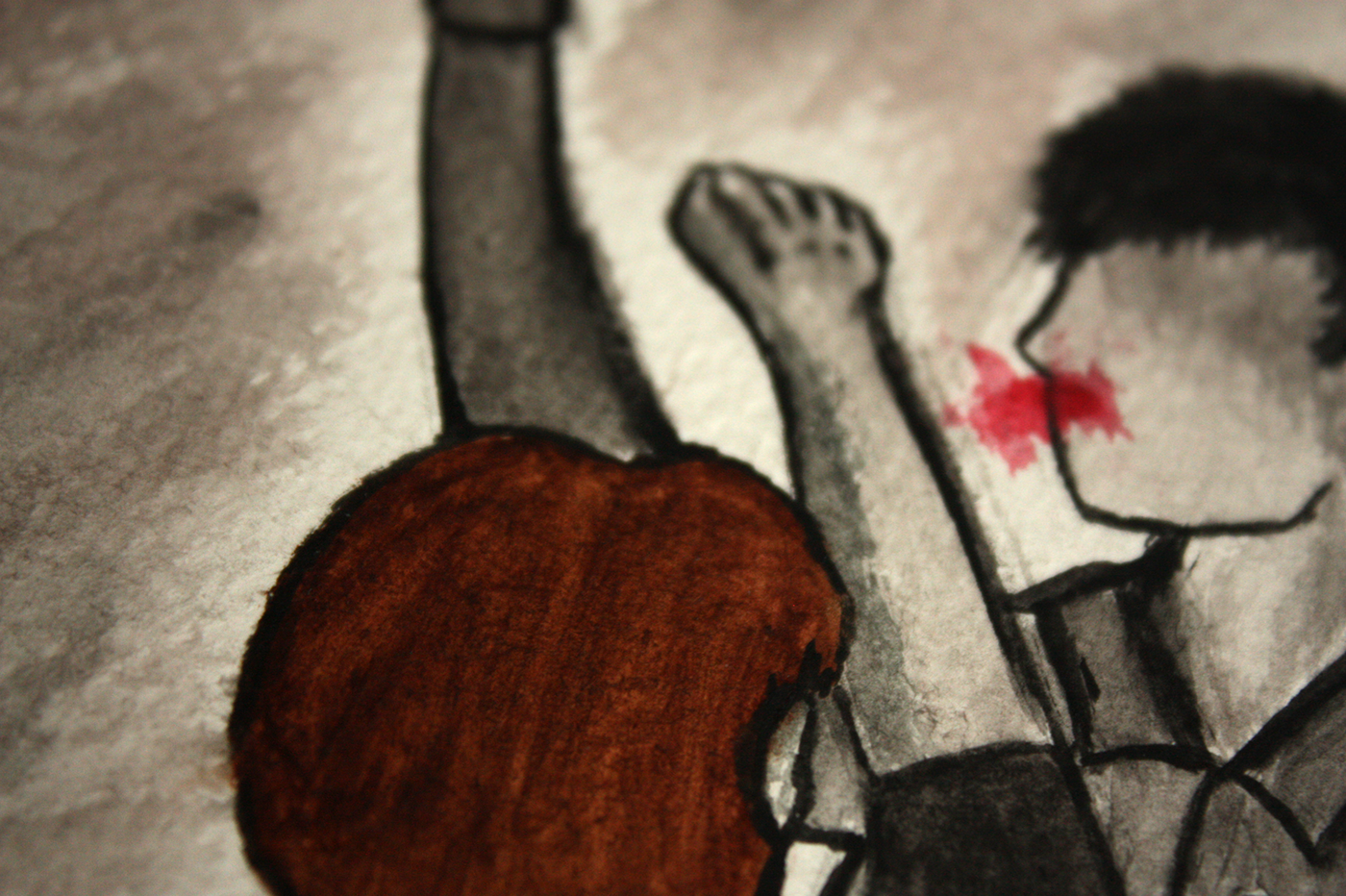
Holden gets beaten up by his roommate, Stradlater, for making a composition about his dead brother's baseball glove. Holden tears it apart after Stradlater tells him it's stupid and attacks him, but he ends up losing the fight.
You can see Holden thinking about the baseball glove with a bright red colour to show that this was important to him, but not as important for Stradlater.

Holden puts on his red hunting hat afterwards as a symbol of his protection after losing the fight, and is so sick of people that he decides to leave the school earlier than planned, while yelling "sleep tight ya morons!" in the hallway.


A map showing Holden's travels in New York after leaving Pencey Prep early, because he can't go home to his parents as they don't know about the "being kicked out of school" part yet. The colours of the objects indicates his different emotions that he is going through on his adventure.
Black: Pencey Prep - Holden feels like a failure; he feels an empty void because he does not belong here.
Red: Traveling - Leaving Pencey Prep early and being excited about going somewhere else.
Blue: The Edmont Hotel - Holden agrees to have a prostitute to his room, but he gets scared of what might happen so he only talks with her instead and pays her to leave. Her pimp shows up later, beating up Holden for not paying her enough money, losing his second fight that same day.
Yellow: Ernie's Pub - A place where sexteen-year-olds like Holden gets to drink alcohol, so he goes there to do exactly that.
Green: The American Museum of Natural History - Holden doesn't know how to deal with change, so he loves going to the museum because everything is always the same and time feels frozen when he's there. It's the simple life that Holden wishes he could have.
Orange/red: The ducks in Central Park Lagoon - Holden is curious and concerned about where the ducks go in the winter. Holden is scared of change and disappearance because of Allie's death, but the ducks symbolise Holden's situation where they show him that disappearance aren't permanent, because the ducks only vanish in the winter.
Orange: The carousel in Central Park - The carousel goes around and stays at the same place, never changing. Holden lets Phoebe, his sister, ride the carousel instead of himself, comfortable with finally accepting himself as the adult.

Holden is trying to find a record so he can give it to his sister, Phoebe, trying to get out of that sadness as he loves his sister very much.

He hears a young boy singing a song about what he thinks is "if a body catch a body comin' thro' the rye" and it makes him feel less sad as he starts to dream about becoming a guardian for kids falling off the cliff in a big field of rye.


Holden is very concerned, as mentioned, about the ducks in the winter and where they go. He tries to go look for them but only manages to break the record he bought for his sister in the process.
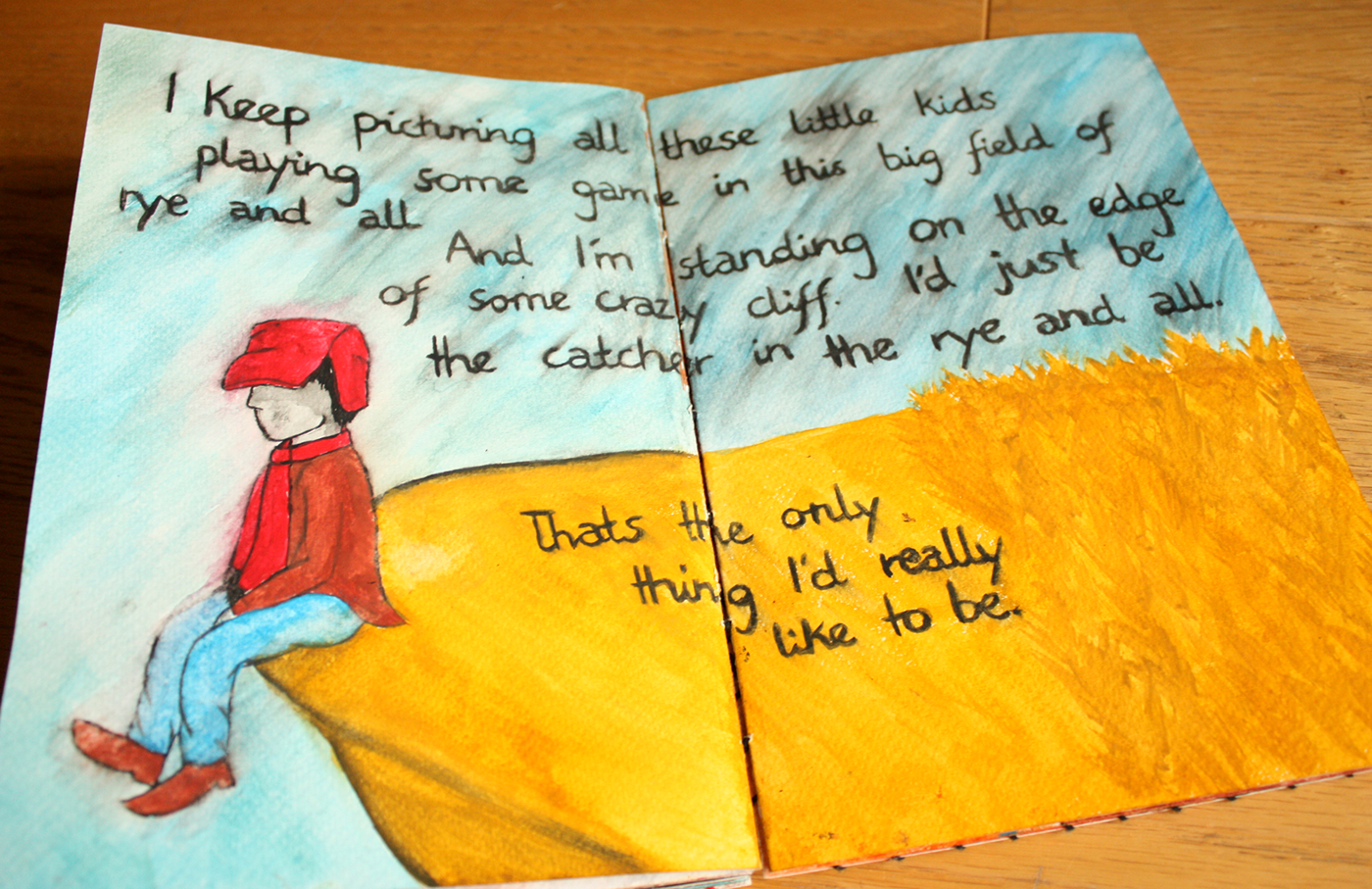
After hearing the song about catching bodies in the rye, all he can think of is being a catcher in the rye. Where he would stand at the end of some filed and catch kids when they fall off. That's the only thing he would really like to be.
This is a misinterpretation of the song he heard, but Holden thinks it's a song about saving children from losing their innocence. Holden and the text looks like it's being dragged away in the paint, to indicate that this is a dream and not reality. Dreaming about this makes him happy because he feels like he has found his purpose in life.


In the end he gives his hunting hat to his sister, Phoebe, as he feels like he has to protect her against the adult world. The only thing that makes him feels some sort of happiness is being with her.
He never wants anything to change and wants everything to stay the same, the reason why he loves The American Museum of Natural History so much, but he is now accepting of being the adult instead of a child having a childish dream, watching Phoebe ride the carousel.
The colour oranges gives out a sort of comfortable feeling, as Holden now is comfortable with being the adult one not riding the never-changing carousel.

After telling the story about what happened to him "last Christmas", it makes him regret telling it as he started to miss all the people he was talking about. So he gives advice not to tell anyone anything, as you will start to miss everybody.
Might worth mentioning that he is telling this story from a mental institution somewhere in California, where he is taking a much needed rest from his former life.
The text is out of "grid" to make it look like Holden might have written it in the book himself like a warning to not tell people stories about other people. The speech bubble at the end is to show that this is the end of book and also the end of the story. The speech bubble started with the first actual page of the book (not shown on the images.)


The text continuing from the front cover.
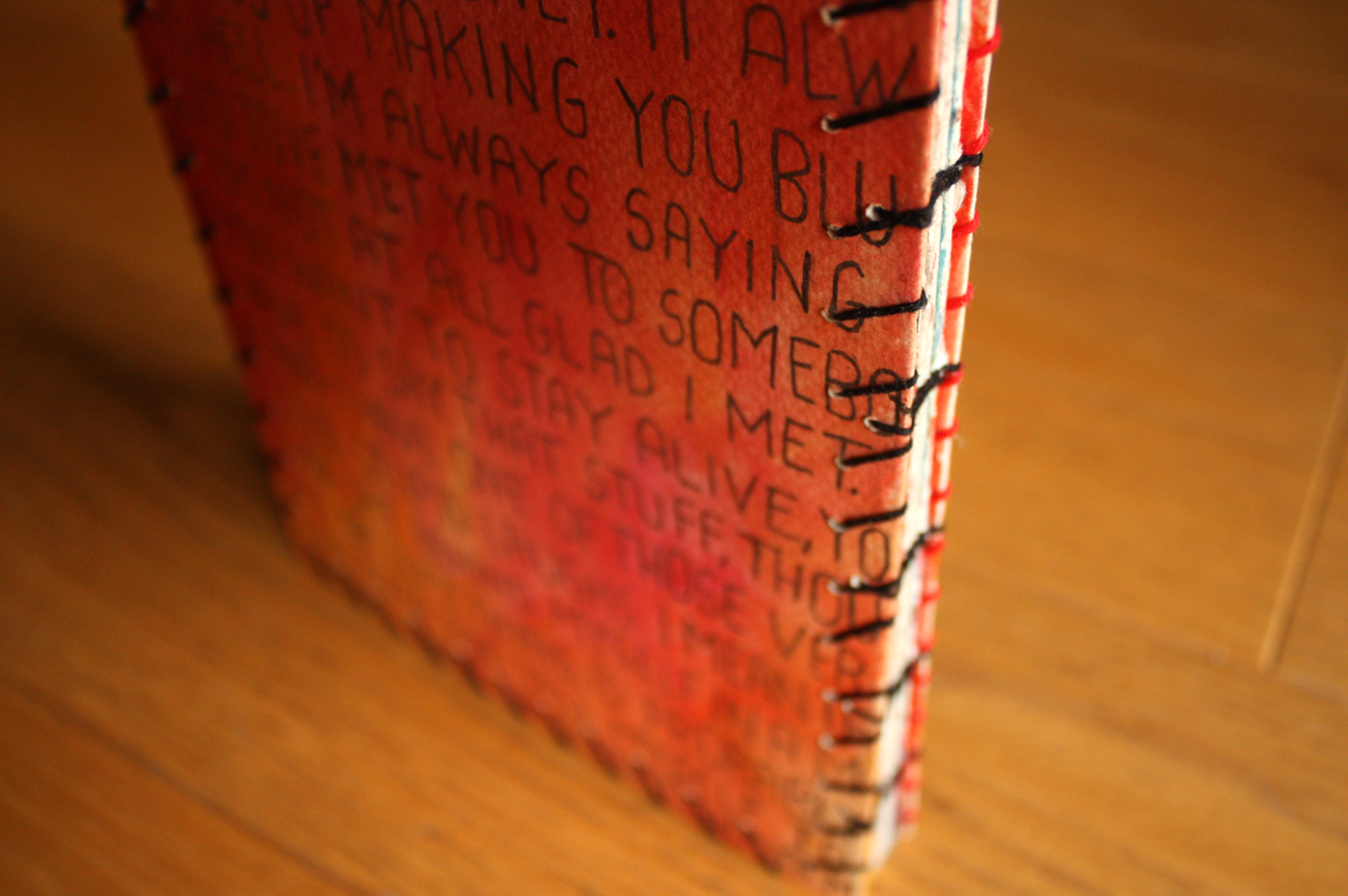
Holden Caulfield's journey through "The Catcher in the Rye" presents many potentially traumatising situations for him and analysing the personality of this character, one can sense a feeling of angst and seclusion. These are some among many traits that make up what is commonly known as mental health issues.
This artist book visually retells the emotions present in the scenarios of "The Catcher in the Rye" through the use of colour and symbolism, and is executed in the form of a handmade book that will be instantly familiar to those who know the story well and may be intriguing for potentially new readers.
This book is mainly for people that might feel/have felt the same way, teenagers especially may have gone through some of the same struggles as Holden did. Holden Caulfield (the protagonist) and his journey present many of the challenges a teenager is likely to face and struggle with, such as turbulent relationships, conflicting emotions, rebellion, desire to stand out, loss of respect, swinging emotions and so forth. These are things teenagers are bound to experience, and should not be sheltered from, but rather frequently be exposed to, in order for them to better their understanding of their evolution, and act more rationally as a result. It is also for people who might suffer from mental illness that also presents some of these struggles.
PRE-PRODUCTION
Sketches and ideas that were never used (they were always there as inspiration), to sketches that were used for the finished product and some process pictures while making the book.
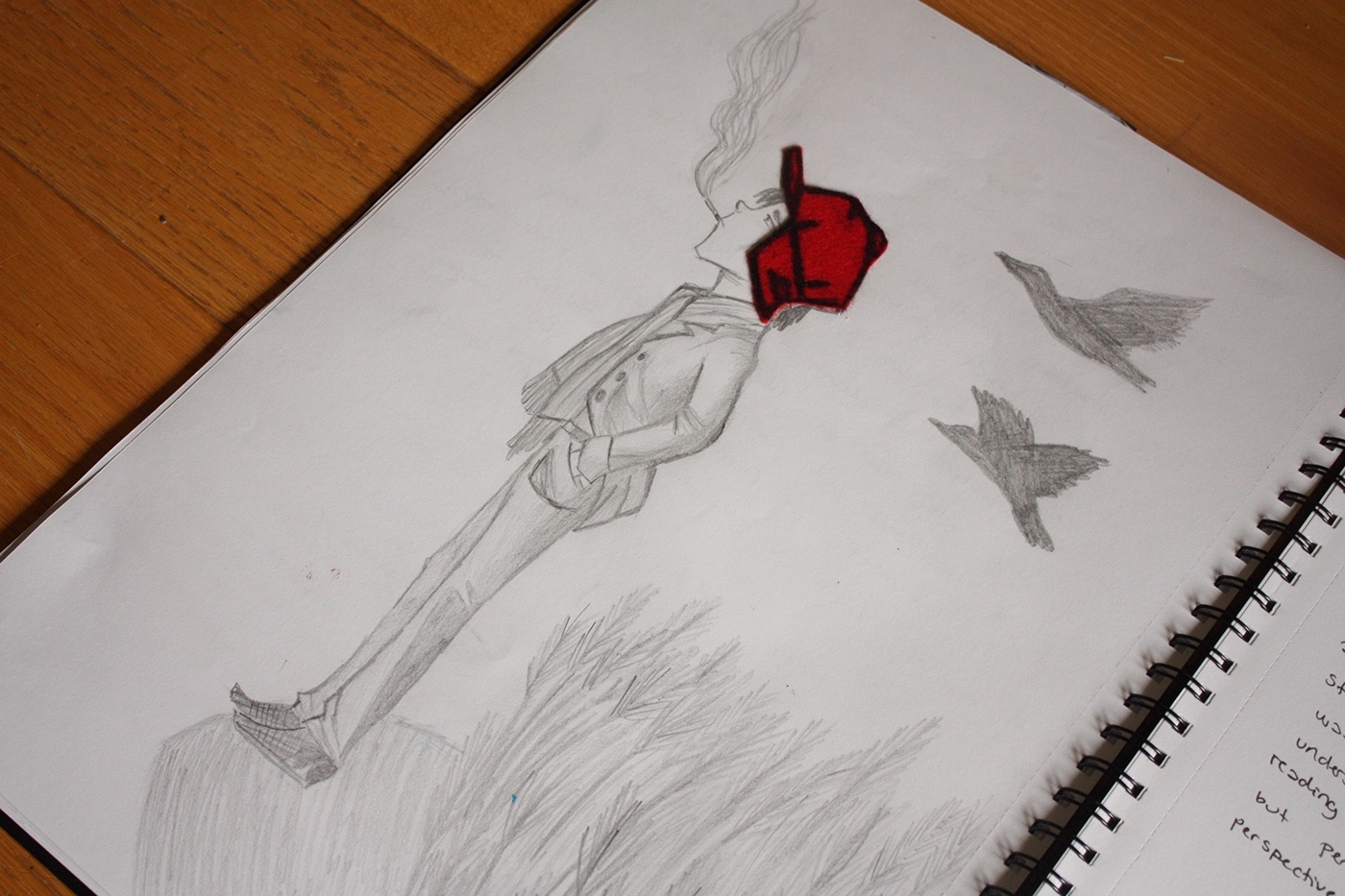














"All morons hate it when you call them a moron."


